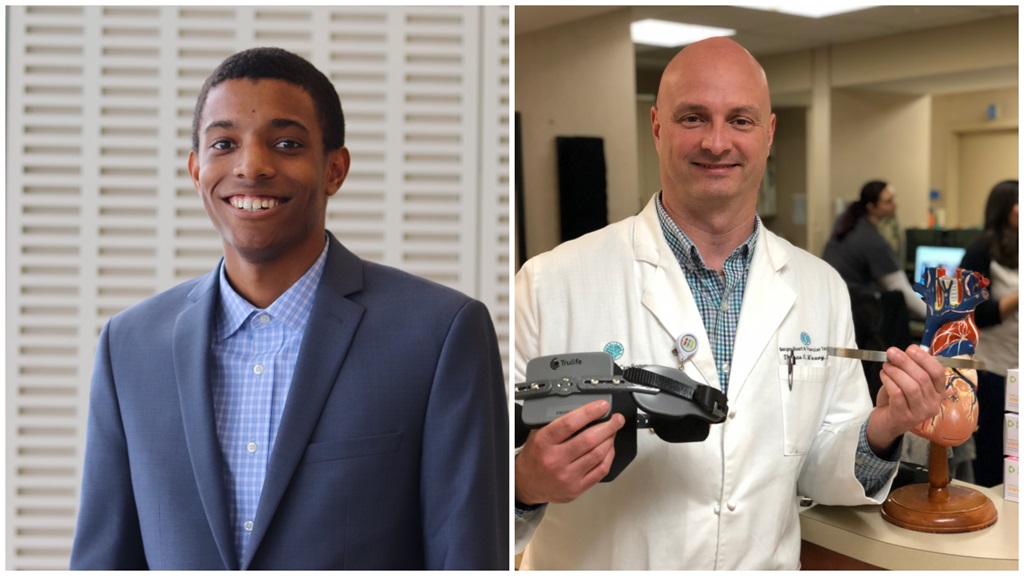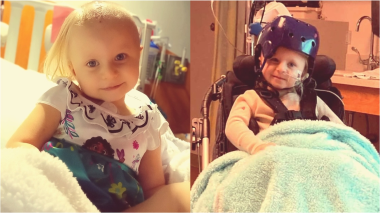Kids love to stand out, but not because they look different than their friends or classmates. That was especially true for Martin Winton.
Martin, now age 21, was born with a chest that appeared scooped out. His condition, called pectus excavatum, sometimes “pectus” for short, was “a point of self-esteem,” says Martin. When his pectus became more noticeable around age 14, he was reluctant even to remove his shirt to go swimming around others.
This past winter, Martin got a boost of self-confidence when his pectus was repaired with an innovative technique at the Chest Wall Reconstruction Clinic at Atrium Health’s Levine Children’s Hospital (LCH) and Sanger Heart & Vascular Institute. Following his surgery, his pectus all but disappeared.
Aside from the immediate physical change, Martin got an added benefit: He was less tired when he exercised. He’s one of a small group of people with a pectus whose lungs are affected by the shape of their chests.
Although some patients like Martin do experience lower lung capacity, pectus excavatum doesn’t put a patient at risk. “I tell all families, your son or daughter can play baseball and soccer, even get hit with a soccer ball, and it will not hurt them,” says Thomas Maxey, MD, a pediatric cardiothoracic surgeon at LCH and Sanger.
At their initial consultation, Dr. Maxey reassured Martin’s family that his condition wasn’t an emergency and they could wait to get it repaired. So, Martin chose to have his surgery during a break between the fall and winter terms of his junior year at college. Martin is currently a student at the Massachusetts Institute of Technology where he’s majoring in computer science and electrical engineering.
These surgeries are usually performed during the teen years, says Dr. Maxey. That’s when the pectus becomes more pronounced and before the chest wall becomes less flexible.
A simple and successful procedure
For Martin’s pectus, Dr. Maxey recommended the most common repair, the Nuss bar procedure. A steel bar is inserted through two small holes on either side of the chest. The bar is then flipped, and the breastbone pops back out.
“It's very similar to braces on your teeth,” says Dr. Maxey.
The minimally invasive surgery takes only about 45 minutes. But patients like Martin have to stay in the hospital for about three days so the doctors and nurses can help them start to recover and manage any pain.
“My biggest worry was about being in the intensive care unit,” says Martin. “But Dr. Maxey was very confident and that helped me with my anxiety. In fact, everyone I interacted with at LCH was very supportive and patient.”
Following his surgery, Martin’s nurses and physical therapists helped him walk up and down the halls. And they gave him some tips for moving around and feeling comfortable once he got home.
Restoring his strength and self-esteem
For the next month, he was on bedrest before slowly resuming some of his normal activities. Once he returned to college, his friends helped him carry his backpack. And he took the shuttle more often than he rode his bike around campus.
Dr. Maxey advises his patients who undergo a pectus repair to stay away from sports for about three months. “But after that, no limitations,” says Dr. Maxey.
Martin will need to have yearly check-ups for the next three years until his bar is permanently removed from his chest.
For other teens in his situation, Martin recommends getting the procedure done if they’re good candidates. “It’s definitely worth it,” says Martin. “You do need to spend time recovering and focusing on yourself,” he adds.
The physical changes of having the pectus repaired are clear. But the psychological impact on a child being able to look the same as his or her peers may be even greater.
“The young mind feels that I’m not worthy of being with my friends. There are some mean kids who will pick on someone that doesn’t look like them,” says Dr. Maxey. “So the benefits of the surgery are far-reaching.”



